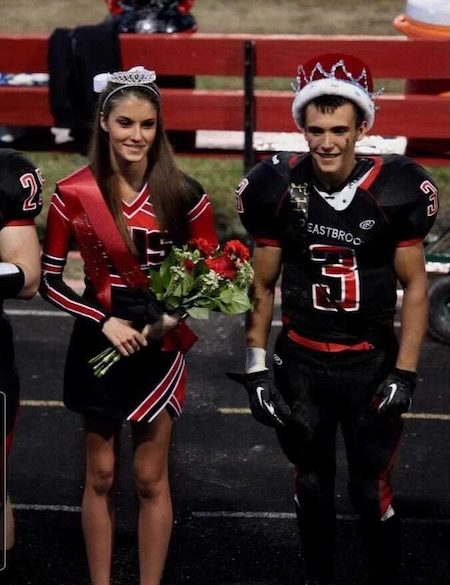Honoring a long celebrated tradition.
High school is a unique time, often filled with teen angst, drama, and uncertainty of the future. With these sentiments comes a myriad of events that have long become synonymous with the high school experience. There’s prom — the dance that drives high school girls to the closest Macy’s in search of the perfect dress. Then there’s graduation — the day that seniors spend the entire year looking forward to. And then there’s undoubtedly one of high school’s biggest traditions — homecoming.
Defined by the University of Illinois as a “long-standing American tradition where colleges and high schools would welcome alumni back to campus and the community,” homecoming is the adored, successful older sibling in high school’s family of events. The tradition is recognized enough that shows like Riverdale, Vampire Diaries, and movies such as Spiderman: Homecoming have plucked the tradition out of the high school genre’s lexicon of tropes to define their own high school narratives.
How homecoming became such a popularized tradition is largely up to debate. By the 1870s, the annual Harvard-Yale game was already enjoying the soon-to-be tradition of inviting alumni back to their alma mater, but three different colleges claim to have held the first “official” homecoming celebration around 1910: Baylor University, the University of Illinois, and the University of Missouri.
Regardless of who actually held the first official game, homecoming’s popularity soon spread, and by the 1920s had already been adopted as an American tradition. Typically occurring during September or October, homecoming celebrations are historically centered around a school’s football game. Leading up to this day, schools will often host a spirit week where students have the opportunity to dress in different themes each day, such as Disney or superheroes. This is a useful way to foster school unity and create friendly competition between grades. Schools might also have a dance to coincide with their homecoming celebration. This dance is typically more casual compared to prom, and depending on the school’s policy, it might be open for underclassmen to participate in.
Arguably, homecoming’s biggest celebration is the crowning of their homecoming king and queen. This process usually happens the week of homecoming, where students will vote on a ballot to decide the homecoming court. Homecoming court consists of a group of students in the running to be nominated for king and queen, which will be then announced during the school’s respective homecoming game. For the crowned king and queen, winning is a source of pride within the school community.
For Dai’Jon Smith, a freshman at Ball State who was nominated as homecoming king his sophomore year in high school, winning the royal title was a feel-good experience.
His school, Herron-Riverside High School in Indianapolis, also had its first school year when he was crowned homecoming king, making him not only a part of the school’s inaugural class but also the school’s first-ever homecoming king.
The uniqueness of this situation was not lost on Dai’Jon.
“To be the first-ever [homecoming king] in the building was really special for me, so I made sure I dressed the part and everything,” he says. “I’m a person who doesn’t mind being in the spotlight.”
Yet, despite the notability of his accomplishment, for Dai’Jon the greatest takeaway was the support he received from his peers and community.
“It felt really nice having all of my friends and teachers supporting everything that I was doing. It was just super fun,” he says.
The homecoming king and queen oftentimes carry the tradition of relinquishing their title the year after for the next set of individuals to receive. If they were seniors, the pair would return to the high school they graduated from the year prior to hand off their crowns.
“I remember stressing about getting my hair done and making a good impression coming back a year later,” says Mallory Cook, who was crowned homecoming queen her senior year in 2013 at Eastbrook High School in Marion, Ind.
“I guess it was kind of exciting getting to come back and pass that off to the next person. I guess it was kind of like a proud moment in a way,” she says when reflecting on the experience.
Mallory also happens to be a substitute teacher at her former high school.
“I’m still involved with the school, which is fun,” she adds.
It’s easy to see why homecoming remains such a popular tradition. Underneath the bright football field’s floodlights, the rambunctious screams of the winning grade during spirit week, and even the crowns and tiaras are memories that last a lifetime. Homecoming is a time for a school’s community to embrace and cherish all the individuals who made the school what it is, past, present, and future. After all, the name rings true: it’s a celebration of coming home, to those who have left and those who continue the legacy.
Sources: University of Illinois, Harvard Alumni, Active, Active, Seventeen, Rattler Report, Seventeen
Featured Image: Provided by Mallory Cook




